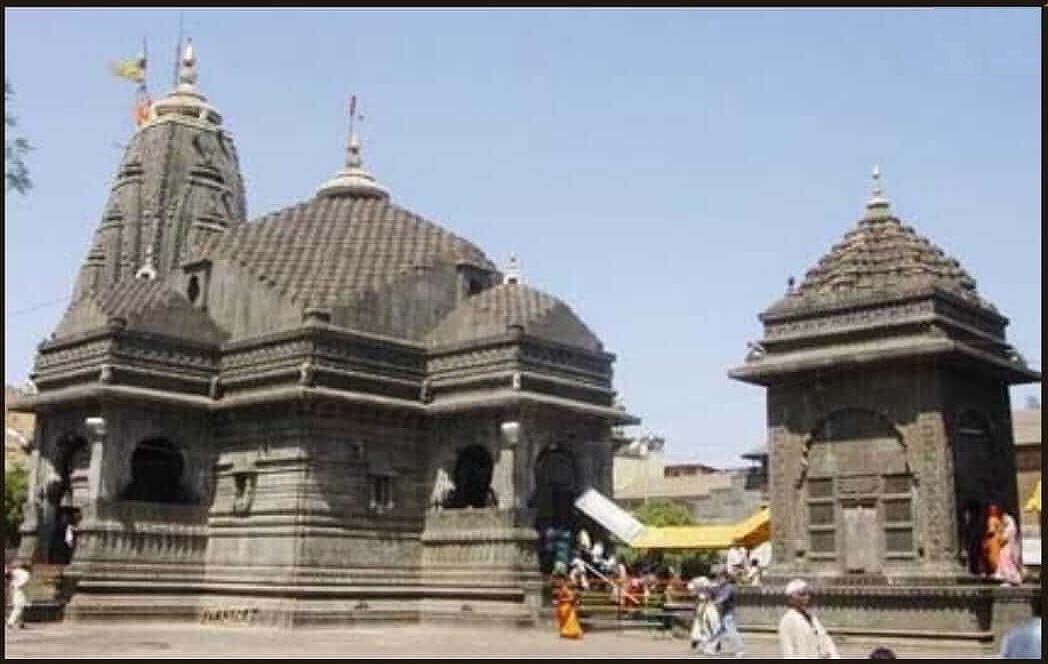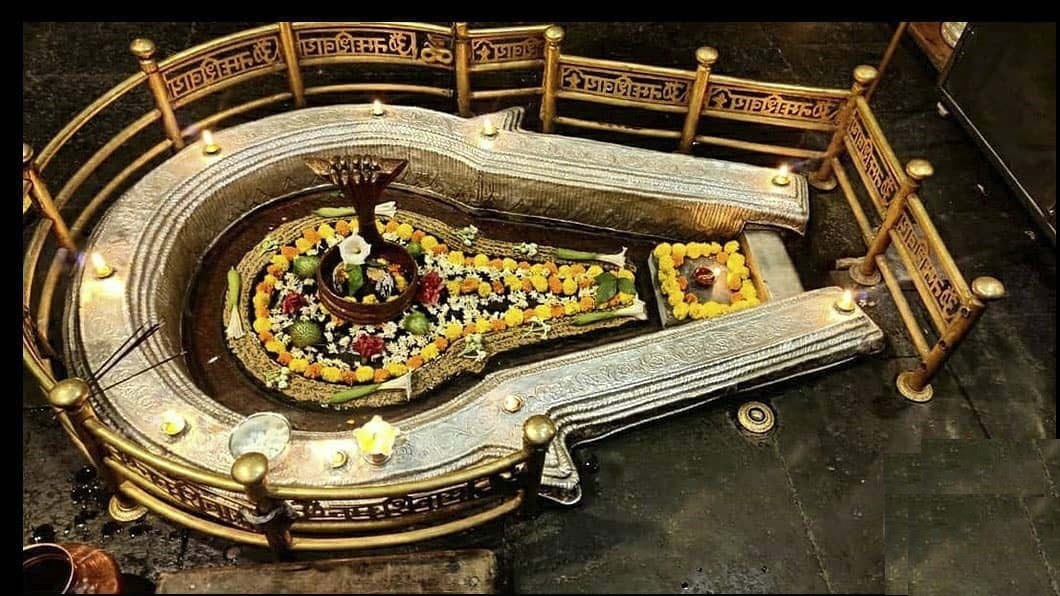Bheemashankar

Bhimashankar – Village of Bhavagiri 50 km north west of Khed, near Pune in Maharashtra. It is an ancient shrine, enshrining Bhimashankara one of the 12 Jyotirlingas of Shiva. It is located 110 km away from Pune in the ghat region of the Sahyadri hills. Bhimashankar is also the source of the river Bhima, which flows south east and merges with the Krishna river near Raichur. The other Jyotirlinga shrines in Maharashtra are Tryambakeshwar and Grishneshwar.
There are about 230 steps to reach the temple.
This temple is closely associated with the legend of Shiva slaying the demon Tripurasura associated with the invincible flying citadels Tripuras. Shiva is said to have taken abode in the Bhima form, upon the request of the Gods, on the crest of the Sahyadri hills, and the sweat that poured forth from his body after the battle is said to have formed the Bhimarathi river.
The Temple: The Bhimashankara temple is a composite of old and the new structures and is built in the Nagara style of architecture. It is a modest temple yet graceful temple and it dates back to mid 18th century. The shikhara of the temple was built by Nana Phadnavis. The great Maratha ruler Shivaji is also said to have made endowments to this temple to facilitate the carrying out, of worship services. As with other Shiva temples in this area, the sanctum is at a lower level.
Although the structure here is fairly new, the shrine Bhimashankaram (and the Bhimarathi river) have been referred to in literature dating back to the 13th century CE. Saint Jnaneshwar is said to have visited Tryambakeshwar and Bhimashankar.

Other temples and shrines: There is a shrine to Kamalaja near the Bhimashankara temple. Kamalaja is an incarnation of Parvati, who aided Shiva in his battle against Tripuraasura. Kamalajaa was worshipped with offerings of lotus flowers by Bhrama. Shaakini and Daakini the Shivaganas who helped Shiva in the battle against the demon are also honored and worshipped here.
The Mokshakund thirtha is located behind the Bhimashankara temple, and it is associated with the rishi Kaushika. There are also the Sarvathirtha, the Kusharanya thirtha where the Bhima river begins to flow eastward, and the Jyanakund.
Worship: Three worship services are offered each day. Mahashivratri is a season of greate festivity here.
It is to be noted that the Rudrasamhita sloka in its reference to Bhimashankar says, Daakine Bhimashankaram. There is also a Bhimashankar temple at Bhimapur hill near Guwahati in Assam where legend holds that a demon by name Bhima who inflicted havoc upon the beings in the area, was slain by Shiva, as he tried to kill a king enaged in Shiva worship. This is a legend similar to that where Shiva emerged from a Shivalingam to vanquish Yama the Lord of death. The Shiva Purana and the Koti Rudra Samhita refer to Bhimashankar temple in the Kamarupa country. However there is also a reference to Mount Sahya, where it is stated that Shiva – Bhimashankara appeared on the Sahayadris.
There is also a Bhimashankara temple at Kashipur near Nainital, which was referred to as Daakini country in ancient days. It is believed that Bhima the Pandava prince was married to Hidamba, a Daakini here. Mahashivaratri is celebrated in great splendour here too. This temple also has shrines to Bhairavanath and Devi, and a temple tank by name Shivaganga.
Temple timing: 5:00 am to 9:30 pm. Abhisheka Timings: 5:30 am to 12:00 pm.
Place to visit Near Bhimashankar Temple:
Bhimashankar wildlife sanctuary
Solanpada Dam
Bhorgiri Fort
Bhima River Origin Place
How to reach:
By Air: Pune Airport – 105 KM
By Rail: Pune Railway Station – 111 KM
By Road:
By Bus: MSRTC operates buses between Pune and Bhimashankar. Buses are available every 30 minutes from 5:30 am to 4:00 pm.
Pune to Bhimashankar is 110.2 km and can be covere by car/taxi.d in 3 hours
Accommodation: Several 1star to 5 star hotels are available.











